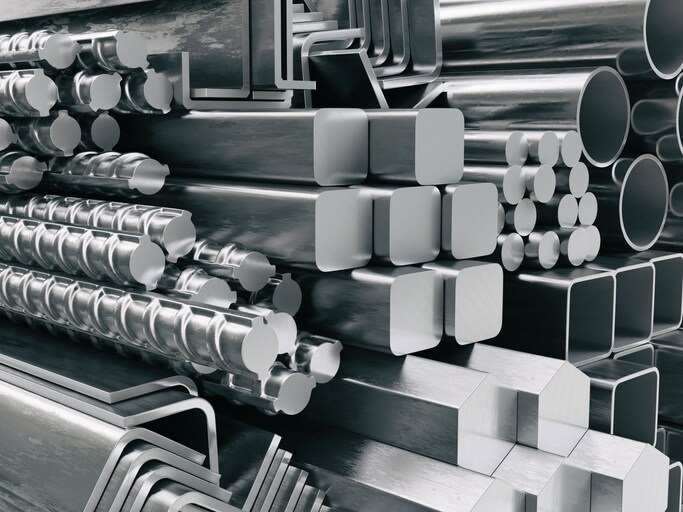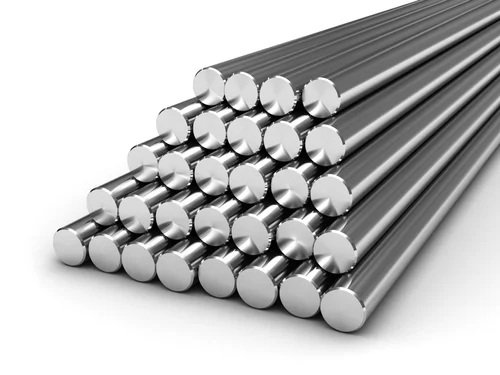English


Views: 222 Author: Tomorrow Publish Time: 2025-07-18 Origin: Site











Content Menu
● What Is Stainless Steel Fabrication?
● Key Differences Between Welding and Stainless Steel Fabrication
● The Importance of Welding in Stainless Steel Fabrication
● Extended Process Workflow: Welding vs Stainless Steel Fabrication
>> Stainless Steel Fabrication Workflow
>> Welding Workflow (A Subset Within Fabrication)
● Challenges in Welding Stainless Steel Fabrication
● Why Combine Welding and Fabrication?
● Frequently Asked Questions (FAQs)
>> 1. What is the primary difference between welding and fabrication?
>> 2. Why is welding stainless steel more challenging than welding carbon steel?
>> 3. Can stainless steel fabrication be done without welding?
>> 4. What welding methods are best for stainless steel?
>> 5. How important is post-weld finishing in stainless steel fabrication?
In the manufacturing world, welding and stainless steel fabrication are terms often used interchangeably, yet they represent different aspects of metalworking. To fully grasp their respective roles and unique processes, it is essential to clarify the differences and understand how they complement each other in creating durable stainless steel products. This article explores the key differences between welding and stainless steel fabrication, their processes, tools, required skills, and how these influence the final product.

Stainless steel fabrication is a comprehensive manufacturing process that involves multiple stages to transform raw stainless steel materials into finished products or components. It encompasses every step from design, cutting, shaping, bending, assembling, to finishing. Fabrication is a multi-step procedure that integrates various techniques to build structures or items out of stainless steel that are suitable for a wide range of applications, including construction, automotive, kitchen equipment, and industrial machinery.
Key processes in stainless steel fabrication include:
- Cutting: Stainless steel sheets, plates, or tubes are cut to size using techniques such as laser cutting, water jet cutting, or traditional shearing for precision and clean edges.
- Bending/Forming: Press brakes and rollers shape the stainless steel into desired angles and contours that meet design specifications.
- Machining: Operations like drilling, milling, and threading remove or shape material to allow for assembly or meet functional needs.
- Assembling: Fabricated parts are positioned and temporarily fixed together, often using clamps, fixtures, or mechanical fasteners.
- Finishing: Surface treatments such as grinding, polishing, or chemical passivation enhance the material's corrosion resistance and aesthetic qualities.
Fabrication is therefore an end-to-end process that aims to create stainless steel products ready for use or further processing.
Welding is a specialized subset of the fabrication process that focuses exclusively on joining metal pieces together permanently by melting and fusing their edges, sometimes with the addition of filler metal. It is a highly skilled, hands-on procedure requiring precise control of heat input to ensure strong, defect-free joints.
In stainless steel fabrication, welding plays a critical role because it determines the structural integrity and durability of the assembled components. Common welding methods for stainless steel include:
- TIG (Tungsten Inert Gas) Welding: Known for producing clean, high-quality welds with excellent heat control, ideal for stainless steel's sensitivity to heat.
- MIG (Metal Inert Gas) Welding: Faster and suitable for thicker sections but may require additional finishing to ensure surface quality.
- Stick Welding (SMAW): Utilizes consumable electrodes and is often chosen for outdoor or heavy-duty applications.
- Robotic Welding: Automated systems that provide consistency and speed for high-volume production demands.
Welding requires specific equipment such as welding torches, clamps, shielding gases, electrodes, and power sources. It also demands trained welders who understand stainless steel metallurgy and know how to manage challenges like warping, distortion, and corrosion susceptibility.
| Aspect | Stainless Steel Fabrication | Welding |
|---|---|---|
| Scope | The entire manufacturing process from raw material to finished product | One specific process within fabrication dedicated to joining metals |
| Processes Included | Cutting, bending, machining, assembling, finishing | Heat-based fusion of metals using various welding techniques |
| Tools and Equipment | Cutting machines, press brakes, machining tools | Welding machines, torches, electrodes, shielding gas systems |
| Skills Required | Broad knowledge of metalworking, machine operation, measuring | Specialized welding expertise, heat control, metallurgy understanding |
| Objective | To build and shape stainless steel components and structures | To create strong, permanent, and defect-free joints |
| Output | Fabricated parts prepared for assembly or end-use | Welded joints as part of assemblies or repairs |
While fabrication handles the shaping, cutting, and preparation of components, welding is essential to bring these components together into a single, durable product. Because of the unique properties of stainless steel, especially its chromium content responsible for corrosion resistance, welding stainless steel requires specialized techniques and precautions:
- Stainless steel has lower thermal conductivity and higher thermal expansion compared to carbon steel, making it more prone to heat build-up and distortion.
- Excessive heat during welding can cause sensitization, where chromium carbides form along grain boundaries, decreasing corrosion resistance.
- Welders use techniques such as TIG welding to minimize heat input and maintain the material's protective oxide layer.
- Post-welding treatments such as pickling or passivation are often used to restore surface quality and prevent corrosion.
This specificity makes skilled welding an indispensable part of stainless steel fabrication, often requiring experienced professionals to ensure quality and longevity.

1. Design and Planning: Detailed designs and material specification are created, usually using CAD (Computer-Aided Design) software.
2. Cutting: Raw materials are cut to precise sizes using laser cutting, plasma cutting, or water jet cutting, optimizing material use and precision.
3. Forming and Bending: These steps use mechanical or hydraulic press brakes, rollers, or stamping machines to achieve required shapes.
4. Machining: Includes drilling, threading, and milling to prepare parts for assembly or functional purposes.
5. Assembly: Structures are temporarily held together using fixtures; this is where fit-up and alignment checks occur before permanent joining.
6. Welding: The selected welding technique is applied to permanently join parts.
7. Finishing: Grinding welds smooth, polishing surfaces, and applying chemical treatments to enhance corrosion resistance and aesthetics.
8. Inspection and Quality Control: The entire fabricated piece undergoes rigorous inspection to assure it meets design and performance standards.
1. Joint Preparation: Cleaning the weld zones to remove oils, grease, and oxides and shaping edges to fit precisely.
2. Setup: Fixing parts securely to prevent movement during welding and establishing shielding gas and power configurations.
3. Execution: Carrying out the welding procedure under controlled conditions.
4. Cooling: Proper cooling to minimize residual stresses and prevent cracking or warping.
5. Inspection: Visual and non-destructive testing (NDT) like dye penetrant, ultrasonic, or x-ray inspection to detect defects.
6. Post-Weld Treatments: Grinding for smoothness and chemical passivation or pickling to restore corrosion resistance.
Welding stainless steel fabrication presents several unique challenges, including:
- Heat Control: Proper heat input is critical to avoid excessive warping or compromising mechanical properties.
- Distortion and Warping: Due to stainless steel's higher expansion rate, controlling distortion during and post-welding is a constant concern.
- Corrosion Sensitivity: Improper welding technique or lack of finishing can create weak spots susceptible to corrosion.
- Surface Finish Issues: Welds tend to discolor or oxidize due to high temperature exposure, requiring additional cleaning processes.
- High Skill Requirements: Welding stainless steel demands a combination of welding knowledge and metallurgy understanding, making it a specialized skill rarely mastered by casual welders.
Effective collaboration between fabricators and welding professionals can reduce these challenges through thoughtful design, precise material preparation, and employing correct welding procedures.
For many stainless steel products, neither fabrication nor welding alone can meet industry demands. Fabrication provides the necessary shaping and cutting to produce parts that fit perfectly, while welding ensures these parts are joined strongly and permanently. For example, large storage tanks, architectural structures, medical equipment, and kitchen appliances all rely on the seamless integration of fabrication and welding for their strength, function, and longevity.
Advancements in technology have also enabled robotic welding in fabrication plants, improving consistency and reducing human error in repetitive welding tasks. This integration sharpens efficiency while maintaining high product quality.
Understanding the difference between welding and stainless steel fabrication is crucial for professionals in manufacturing and design fields as well as consumers who value durable products. Fabrication is the broad process that shapes and prepares stainless steel materials, creating parts ready for assembly and use. Welding, by contrast, is a specialized procedure that permanently joins those parts using heat and filler metals. Given stainless steel's particular characteristics, welding requires specialized techniques and expertise to avoid defects and maintain corrosion resistance. Both welding and fabrication are essential, complementary processes that ensure the manufacture of strong, precise, and corrosion-resistant stainless steel products.

Answer: Welding is a specific process used to join metal parts, while fabrication covers the entire process of shaping, cutting, assembling, and finishing metal materials, often including welding as one step.
Answer: Stainless steel has lower thermal conductivity and higher thermal expansion, making it more susceptible to warping and sensitization if heat input is not controlled correctly.
Answer: Yes, mechanical fasteners or adhesive bonding can sometimes replace welding, but welding is often preferred for its strength and permanence in structural applications.
Answer: TIG welding is favored for its precision and control, especially for thin materials. MIG and stick welding are also common depending on thickness and application.
Answer: Very important. Finishing processes like grinding and chemical treatment restore corrosion resistance and improve appearance by removing oxidation and discoloration from the weld zone.
Welding Vs Stainless Steel Fabrication: Understanding The Manufacturing Process Differences
Stainless Steel Fabrication Vs Powder Coated Steel: Durability And Cost Comparison
CNC Machining Vs Stainless Steel Fabrication: Pros And Cons for Industrial Use
Stainless Steel Fabrication Vs Carbon Steel Fabrication: Key Differences Explained
Stainless Steel Fabrication Vs Aluminum Fabrication: Which Is Right for Your Project?
Stainless Steel Grades 201 Vs 304: Cost Vs Performance Breakdown
316L Vs 316 Stainless Steel Grades: Which Is Better for Corrosion Resistance?
Comparing Austenitic Vs Martensitic Stainless Steel Grades: What You Need To Know?
Stainless Steel 430 Vs 304: Key Differences Explained for Manufacturers
304 Vs 316 Stainless Steel Grades: Which One Suits Your Project Best?
